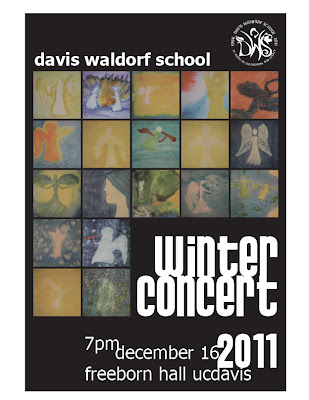medieval history with grade six

In the sixth grade, we study Roman and medieval history. The cause and effect quality of these periods in history, the sense of law and order, conviction for truth and justice, and devotion to beliefs are soul food for the sixth grader. In studying the events surrounding the fall of the Roman Empire and the rise of Christianity and medieval history, I realized that there really is not a clear line between the end of one period of history and the beginning of another. History has a sequential quality, a cause and effect linearity, that is particulary evident in the rise and fall of the Roman Empire and the beginnings of medieval history. A series of events, singular and concurrent, all contribute to the way the human story marches forward. I though I had left Rome behind several weeks ago in our Roman history block, but the Roman Empire proved quite resilient as it formed the foundation for the beginnings of the Dark Ages. So our medieval history block had to start with the fall of the Empire.
Under the Emperor Tiberius, a man named Jesus was crucified by the Romans for fear that his teachings about God and the power of love was counter to the laws of the Romans. His followers began to spread his teachings, and Christianity was born. Under the reign of Nero, many Christians were tortured and executed. By the time Hadrian had taked power, it was unlawful to be Christian and many went into hiding, spreading the word of God secretly. The Roman Empire reached the height of its power during Hadrian's reign, and many roads were built that reached to the edges of Hesperia, Gaul, the River Danube, and the northern coast of Africa.
In Britain, the Romans had tried to extend their laws and customs to this forested island. Pagan tribes of Celts resisted the might of the Romans. One tribe, the Iceni, led by Queen Boudicca, fought the Romans bravely. But Queen Boudicca and her two daughters finally poisoned themselves when they realized they had lost, and did not want to be brought to the city of Rome as prisoners to be humiliated, tortured, and executed. The Iceni were one of the last Celtic tribes to resist the Romans, and from then on, much of Britain, except for the northern lands where the Picts and Scots had lived, went under Roman rule.
The sixth graders and I, on a sunny Friday at the end of school, re-enacted the battle between the Romans and Celts out on the school's lawn, which abuts a mound of dirt and logs. The Romans marched with shields towards the Celtic hill fortification. I played the role of a Roman officer. On my command, we charged towards the hill, PVC pipe-swords drawn and ...we all threw water balloons at each other, and the children dumped a bucket of water on me! Glorious! But Christianity continued to spread, and in the city of Verulanium in Britain, a Roman nobleman named Alban had chanced upon an old man he helped. The old man was a Christian. After hearing his stories about Christ, Alban proclaimed himself Christian. Roman soldiers came to his house, and he helped the old man escape. Alban did not deny to having helped the old man, and also admitted to the Roman officer, a family friend, that he had converted to Christianity. When Alban refused to renounce his faith, Alban was executed. He became the first Christian in Britain to die as a martyr.
Emperor Diocletian divided the Roman Empire into the Western Roman Empire and the Eastern Roman Empire. He gave the Western Empire to Maximinius. Their successors, Maxentius, the son of Maximinius, and Constantine, disagreed about the rule of the two halves of the Empire. They declared war on each other. Constantine had a vision from God and he instructed his men to paint crosses on their shields. When they went into battle against Meaxentius' soldiers, they scared them off with a crucifixion image on their shields, and the seeming determination they had on their countenances. Constantine decided that Rome would no longer be the center of power, so he established Constantinople. The executions of Christians stopped. It became fashionable to be a Christian.
Meanwhile, Germanic tribes, barbarians, from the northeast, began to push against the fortified boundaries of the Roman Empire. The tribes did not have centralized power so the Roman tried to convince them to battle as Romans against other Germanic tribes. Roman law, loyalty, and power began to crumble under the weight of unruly, uncontrollable hoardes of people.
Attile the Hun, the "Scourge of God," struck fear and destruction across the Empire. Eventually, the Goths and the Vandals took their tour of pillaging and plundering the Empire. The Western Empire fell into ruin, and the Eastern Empire, ruled from Constantinople, managed to maintain some power due to tenuous alliances with the barbarians. The Angles and Saxons, also Germanic tribes, traveled northward into Britain as mercenaries against the Picts and Scots, battling at Hadrian's Wall and everywhere in the British countrysides.
The great Migration of People, the huge nomadic tribes of the central plains of Europe, continued their movement into what was left of the Roman Empire. Odoacer, a strong Roman Commander-in-Chief of Germanic descent and Christian faith took control of the Western Empire and threw away the title of Emperor. In 476 AD, the Empire ceased to exist. Along with the unrecorded history of the Angles and Saxons in Britain, and the settling of Germanic tribes throughout Europe, this period of history became known as the Dark Ages.
The monks believed that to be a true Christian, one must live simply and virtuously. In their monasteries were scriptoriums, where they spent night and day as scribes, creating beautiful, delicate, and perfect manuscripts of religious texts.
The sixth graders are learning the art of calligraphy and illuminated manuscripts. They will be completing a page of their creeds, of what it is they have a conviction for, of what they believe. It ties in with the strong devotion of the Christians, and of knighthood and chivalry. We had touched on the seven knightly virtues, and they seem to be getting into the spirit of the chivalric ways! We are now in Spring Break. The timing of this block seemed to work well, as some families will be celebrating Easter, a time important to Christianity. When the children return, we wil learn about Islam and Eleanor of Aquitaine, the mother of medieval history! We will be working more on our calligraphy and completing our creeds. We will also be working on our individual coats-of-arms just in time for our participation in the Medieval Games, where we will compete with other sixth graders from other Waldorf schools.










































